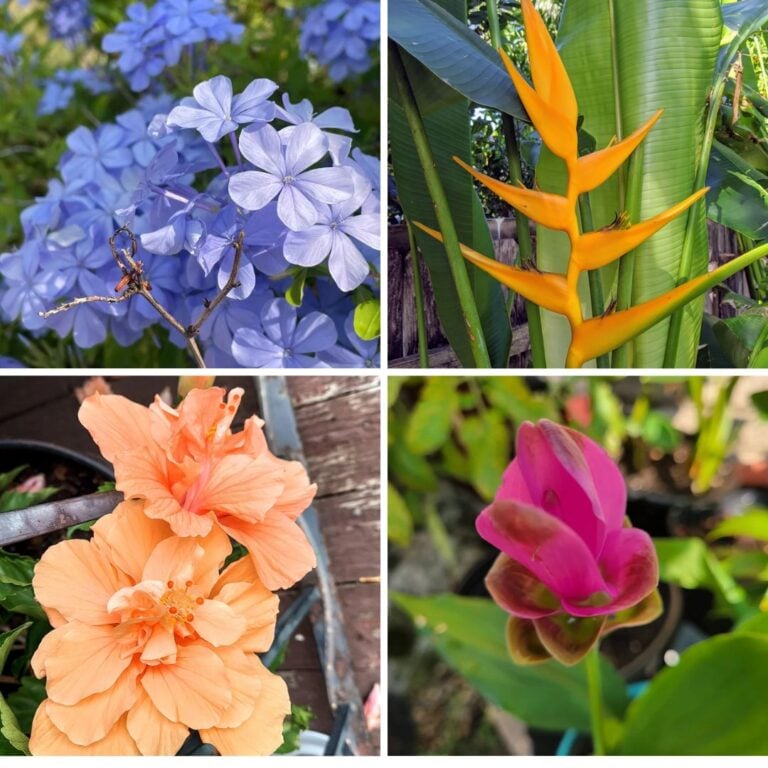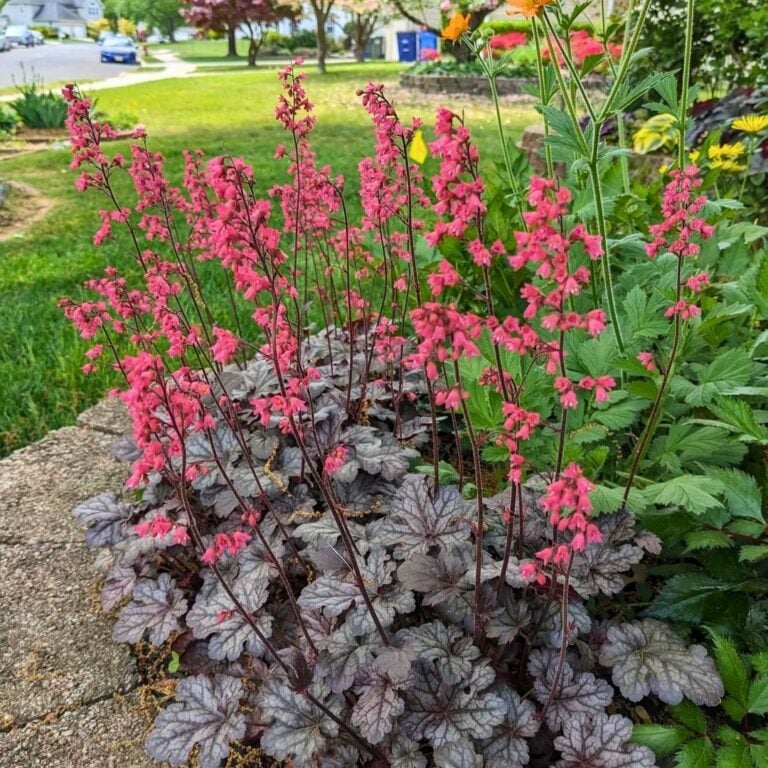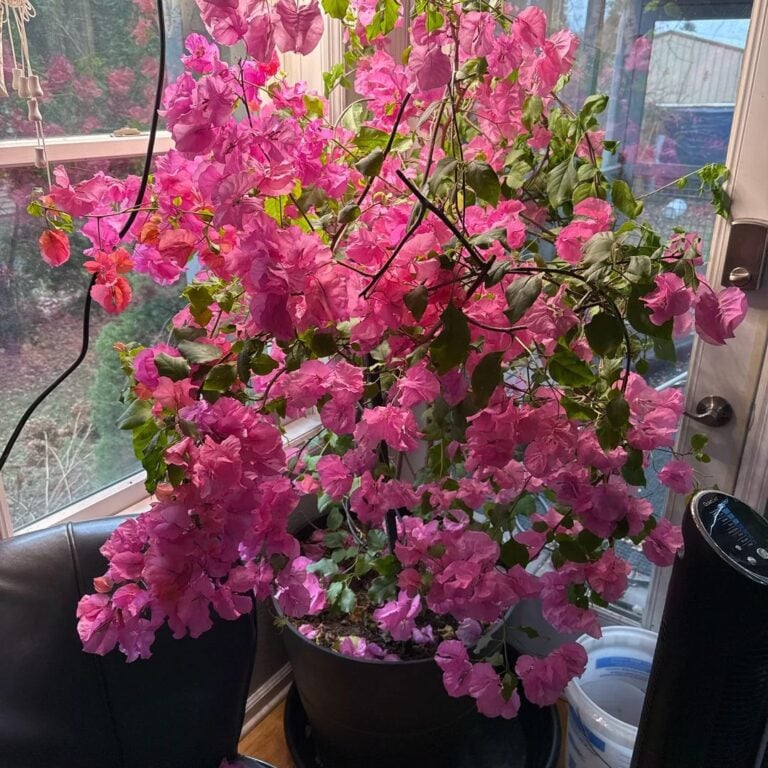8 Houseplants That Are Sensitive to Fall Drafts and How to Protect Them
When fall rolls around and the air gets that first chill, I can’t help but worry a bit about my houseplants. Some of them just don’t handle temperature swings or sneaky drafts from open windows very well.
Keeping an eye on these sensitive houseplants helps me keep them happy through the season. Figuring out which ones need extra care really does make a difference in how my indoor garden looks.
Please note: Simplify Plants is reader-supported. As an Amazon Associate, I earn from qualifying purchases made by our readers with no extra cost added to you all! Some links in the post are affiliate links and I get a commission from purchases made through links in the post.
1) Boston Fern
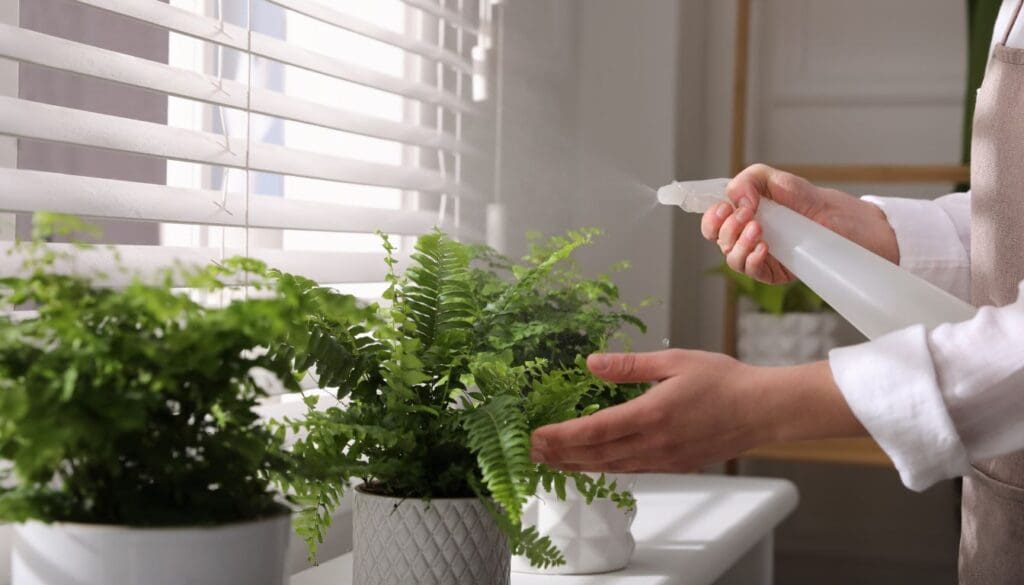
Boston ferns are honestly some of my favorites, but wow, they’re sensitive to cold drafts in the fall. If a chilly breeze sneaks in, the leaves start turning yellow or dropping—and that’s never a good sign.
I always try to keep my Boston fern away from doors and windows that let in even a little cold air. These ferns really like it warm and humid, so if the room gets too cold or dry, they look sad fast.
Even a short spell near a draft seems to stress them out. I usually move my Boston fern to a cozy spot as soon as the weather shifts.
It’s happiest when the temperature stays above 60°F. I avoid setting it near air vents or fans, since moving air dries out those delicate fronds.
When I water, I use room-temperature water—cold water just makes things worse. I mist the leaves more often when heaters kick on and the air dries out.
As fall goes on, I check my fern more often. If it starts looking droopy or losing leaves, I look for drafts nearby.
A little attention really helps keep my Boston fern green and happy, even as the weather changes.
2) Calathea Orbifolia

I absolutely love the look of Calathea Orbifolia—those big, striped leaves just pop. But, honestly, this plant is ridiculously sensitive to cold drafts in the fall.
Whenever I put mine near a window or a door that opens a lot, the leaves start curling or get brown on the edges. Drafts from windows or even the AC can stress it out, and it shows.
To keep my Calathea healthy, I always make sure it’s far from cold air. I never put it near entryways, and I move it further from windows when the temps drop.
Consistency is key—warmth and humidity, always. If my place feels dry, I set up a small humidifier or mist the leaves a bit.
That seems to keep the leaves soft and green, even when it’s chilly outside. Dry, cold air is just not their thing.
I check for drafts pretty often. Even a minor temperature change can upset Calathea Orbifolia, so these little steps help keep it looking fresh.
3) Fiddle Leaf Fig

My Fiddle Leaf Fig is a showstopper with those big, dramatic leaves. But let’s be real—it’s also a bit of a diva about fall drafts.
When the weather cools, it gets stressed if it’s anywhere near windows or doors. Cold drafts make the leaves droop or just drop right off, which is always a bummer.
I always keep my fig away from breezy spots. Even a quick chill from an open window can do damage.
This plant wants steady warmth and hates sudden changes. I check for cold air leaks around its spot and move it if I find any.
Watering is a balancing act, too. I try not to overwater during the fall since cold drafts slow down water use.
Too much water and a chilly room? That’s a recipe for root trouble. Bright, indirect sunlight is best, but I keep it away from cold window glass.
A little thermometer helps me catch cold spots. If it’s too chilly, I move my fig to a warmer, draft-free area.
Simple steps, but they help my Fiddle Leaf Fig stay happy even as fall makes my place colder.
4) Peace Lily

The Peace Lily is hands-down one of my favorites. Its deep green leaves and white blooms just make any space feel fresher.
But, I’ve noticed it really hates cold air. If I put it near a window or door in fall, it starts to look sad fast.
Cold drafts make the leaves droop or turn yellow, and sometimes the flowers just stop blooming if it gets too cold.
To keep my Peace Lily happy, I always pick a spot away from drafty windows or doors once the weather cools. I try to keep it in a room with steady temps.
Letting the soil get too cold is bad news, too. I keep the soil just a little moist and avoid cold water when I water.
If my Peace Lily isn’t looking great, I check for cold air nearby. Moving it just a few feet from a draft can perk it right up.
It doesn’t need direct sunlight, so moving it away from windows in fall isn’t a problem. Warmth is way more important for this one.
5) African Violet
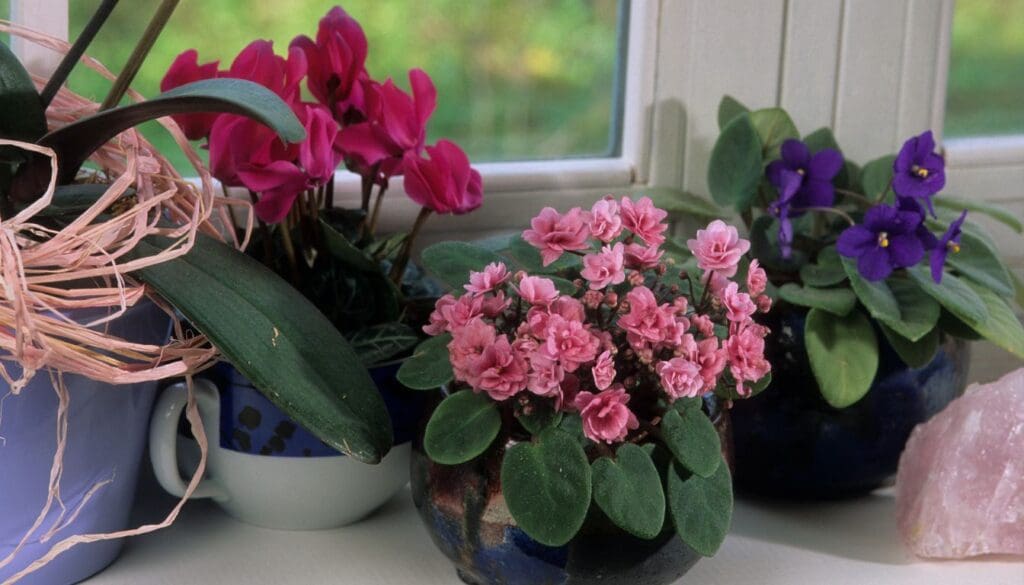
I love how African violets brighten up a windowsill with their blooms. They’re such a classic, but wow, they do not like cold air.
Cold drafts from windows or doors make the leaves curl or turn yellow. If it gets too cold, the plant may even stop growing.
African violets do best in rooms that stay warm and steady. I always keep mine away from open windows in the fall.
Even a drafty spot can stress them out, so I stick to places where it stays between 65°F and 75°F. As soon as it gets chilly outside, I check for breezes near my plants.
If I feel a draft, I move them right away. That quick swap keeps the leaves healthy and the flowers coming.
I also never water them with cold water—room temperature is best. Cold water can shock their roots, especially if the air is already cool.
If the leaves look limp or spotty, that’s my cue something’s off. Keeping my African violets cozy and away from drafts really helps them thrive, even when fall sets in.
6) Spider Plant

Spider plants are such easygoing, cheerful houseplants—I love having them around. Those long, arching leaves add a lot of energy to a room.
But I’ve learned that spider plants are actually pretty sensitive to cold drafts, especially when fall hits. When cold air blows on them, the leaf tips start turning brown, and that’s usually my first warning.
If my spider plant sits near an open window, door, or vent in chilly weather, it gets stressed fast. So, as soon as the temperature drops, I move it away from direct drafts.
Keeping spider plants in a spot with steady, comfy temps really helps. I avoid windowsills or spots where the temperature might suddenly dip.
They do best between 60°F and 75°F. If it gets colder, growth slows down and the leaves lose their color.
Usually, once I move the plant to a safer spot, it perks up again. I pay attention to air flow around my place, especially in autumn.
If I notice a draft, I just shift the plant. A simple move can make a huge difference.
I also cut back on watering in fall since cooler temps mean the soil dries out slower. Too much water and cold drafts can lead to root issues.
These little changes keep my spider plant looking bright all season. It’s honestly easier to just move the plant before the chill sets in.
7) Anthurium
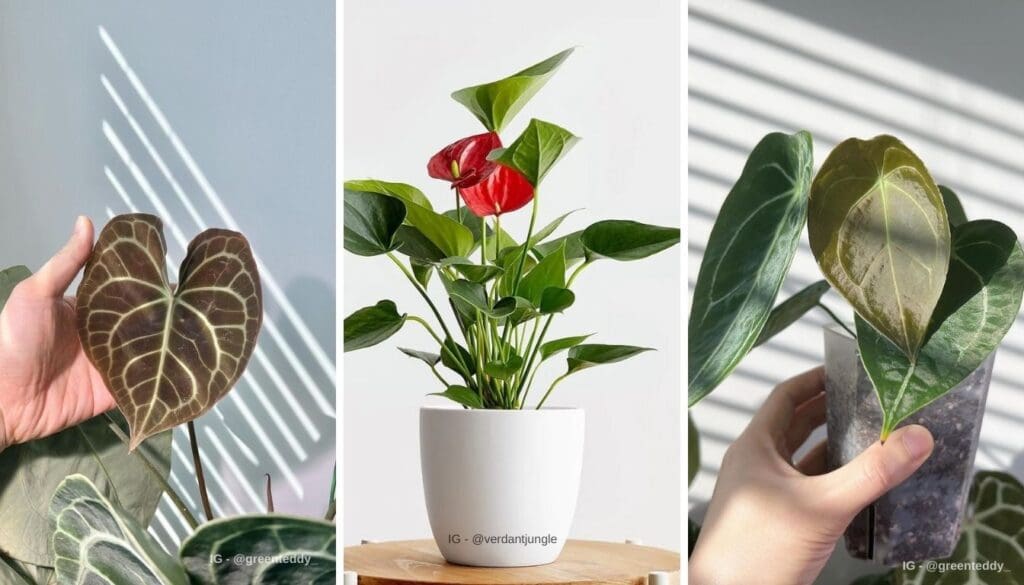
I always love the bright, heart-shaped flowers of my Anthurium—they just liven up a room. But, honestly, they’re pretty sensitive to cold air from open windows or doors in the fall.
If I leave my Anthurium near a draft, the leaves can turn yellow or brown, and sometimes even the flowers start to wilt. It’s obvious this plant likes stable, warm temps.
To keep my Anthurium healthy, I move it away from chilly breezes as soon as fall starts. I find a cozy spot where the temperature doesn’t swing.
That small move keeps the leaves and flowers looking great. I also make sure the soil isn’t soggy after watering.
Too much water, plus a cold draft, is bad news for the roots. I let the top of the soil dry out before watering again.
With a little extra care, my Anthurium stays happy through the season. Those bright blooms last longer when I keep it out of the cold.
8) Prayer Plant
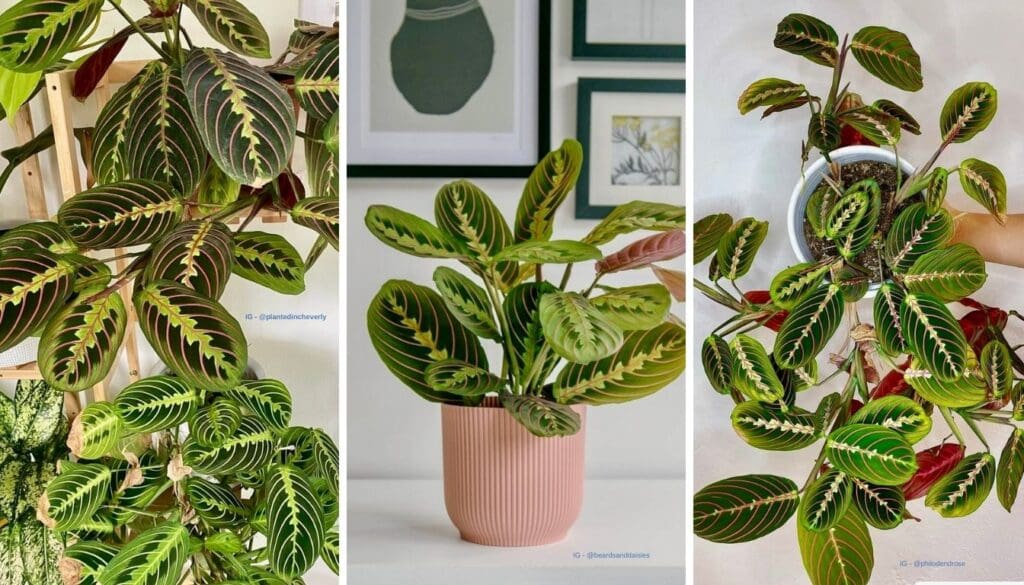
I love how the prayer plant adds color and personality to my space. The way its leaves move up and down during the day is just fun to watch.
But, it’s pretty sensitive to cold drafts. Even a light breeze from an open window or door in the fall can stress it out.
Leaves might curl or get brown edges if it gets too chilly. So, I always keep my prayer plant away from windows or doors that get opened a lot.
I also avoid putting it near air vents. Consistent, warm temps really help.
The prayer plant likes a humid environment, too. When fall comes and the air dries out, I use a humidifier or set a little tray of water nearby.
That keeps the leaves fresh and vibrant. If I see any signs of stress, like drooping or spots, I check the temperature right away.
If it’s in a draft, I move it. Protecting the prayer plant from cold air keeps it happy and growing.
I check on it each week to catch any problems early. It doesn’t need much special care, but staying alert to temperature changes makes a real difference.
If I treat it right, it rewards me with colorful, healthy leaves all season.
Why Houseplants Are Sensitive to Fall Drafts
When I start noticing cooler air sneaking into my home in the fall, I really pay attention to my houseplants. Sudden cold drafts can make indoor life tough for certain plants, and sometimes their growth or appearance takes a hit.
Common Causes of Cold Drafts Indoors
Cold drafts tend to sneak in through spots like windows, doors, or those annoying gaps in old walls. When I open doors or windows for fresh air, I sometimes forget this can drop the temperature right near my plants.
Spaces near entryways, sliding doors, or poorly sealed windows are classic troublemakers for chilly air flows. Heaters cycling on and off can stir up the air too, and honestly, some rooms are just colder or warmer because of where the vents are.
Here’s a quick list of common sources of drafts:
- Cracks around doors or windows
- Open vents or chimneys
- Poor insulation in older buildings
- Frequent opening of exterior doors
Drafts pop up more in rooms facing the wind or on lower floors. I try to check for cold spots where my plants might be at risk.
How Drafts Impact Plant Health
Plants—especially the tropical types—really don’t like it when temperatures dip even a little. Cold air hitting leaves or roots can mean yellowing, wilting, or sudden leaf drop.
Sometimes the whole plant just slows down or seems to stop growing. Drafts dry out plant leaves and soil faster, too.
I’ll notice dry, crispy edges or slow recovery after watering. If a plant is close to a drafty window at night, the chill can often lead to leaf damage or stunted growth.
To help my plants out, I move them away from drafty spots and seal up gaps where I can. Careful placement just makes life easier for these green buddies.
How to Protect Your Sensitive Houseplants
I always try to keep my houseplants safe from cold fall winds and those surprise temperature drops. Small steps can really make a difference in how healthy my plants look as the seasons shift.
Practical Placement Tips for Fall
I keep my houseplants away from doors and windows that let in cold air. Putting plants up on shelves, plant stands, or tables helps keep them off the floor, which is usually colder.
Drafty rooms are tough on plants. I use foam weather strips or even rolled towels to block cold air sneaking in at the window sills.
When I need to air out a room, I move plants out of the way first. It’s a little extra work, but worth it.
I avoid putting my sensitive plants near heaters or air vents, since hot or blowing air can mess them up. Rotating my plants helps each side stay warm and get a fair shot at the light.
Quick Reference Table:
| Tip | Why it Helps |
|---|---|
| Move from windows/doors | Avoid cold drafts |
| Use plant stands | Warmer air levels |
| Block air leaks | Prevent temperature drops |
| Keep plants from heaters | Avoid hot, dry air |
Signs Your Plant Is Stressed by Drafts
I watch my plants for a few telltale signs:
- Droopy or curling leaves
- Yellowing or browning at edges
- Sudden leaf drop
- Wilting, even if the soil is moist
If I spot these changes, I gently move the plant to a warmer spot. I also check if the air’s getting too dry, since drafts and heaters can zap moisture from leaves fast.
When leaves get brown tips or start dropping, I go ahead and trim off the damaged parts. That usually stops things from getting worse.
Frequently Asked Questions
People ask me all the time about keeping houseplants safe as it gets colder, which types are okay in chilly spots, and what I do to keep them happy year-round. Some houseplants, like Boston Fern or African Violet, really do need extra care once the temperature drops.
What are some houseplants that can survive in cool, dark rooms?
I’ve found that Snake Plant, ZZ Plant, and Pothos are pretty reliable in low light and cooler rooms. The Cast Iron Plant is another solid pick, since it handles cold and dark spaces better than most.
How do you protect sensitive houseplants from fall drafts?
I always move my plants away from drafty windows and doors. Adding a thick curtain sometimes helps block the cold air.
Placing sensitive plants, like Fiddle Leaf Fig, further inside the room keeps them safer from sudden temperature swings.
Can you list low light indoor plants that are prone to draft damage?
Some low light plants, like Calathea Orbifolia, Boston Fern, and Peace Lily, are pretty sensitive to drafts. I try to keep these away from vents, open windows, or exterior doors.
Each of these can get brown leaves or just stop growing if they get hit with cold air.
Which indoor plants are best suited for colder climates?
In my experience, the Cast Iron Plant, Snake Plant, and ZZ Plant put up with colder temperatures better than others. They can handle lower indoor temps, so they’re good for rooms that stay cool.
How can I keep my plants healthy in a cold bathroom?
I keep my bathroom plants off the floor and away from the tub or windows where it gets chilly. If the bathroom’s dark, I’ll use a small grow light.
Regularly checking the soil helps, since cold rooms dry out more slowly.
What steps should I take to prepare my houseplants for the winter season?
When winter rolls around, I usually move my sensitive plants away from any cold drafts. I try not to let their pots touch chilly windows either—plants hate that.
I also reduce watering since, honestly, they just don’t need as much with the shorter, darker days. Cleaning their leaves can be a bit tedious, but it really does help them soak up whatever sunlight they can get.
Recommended Garden Supplies
| Product Image | Our Recommended Gardening Supplies | Check Offers! |
|---|---|---|
Top Top
Top
Top
Top
Top
Top
Top
Top | rePotme Houseplant and Tropical Classic Potting Soil Mix | Check Offer On Amazon |
 Top
Top
Top
Top
Top
Top
Top
Top | Espoma Organic Indoor Plant Food | Check Offer On Amazon |
 Top
Top
Top
Top
Top
Top
Top
Top | GooingTop LED Grow Light 6000K Full Spectrum Clip Plant Growing Lamp | Check Offer On Amazon |
 Top
Top
Top
Top
Top
Top
Top
Top | Soil Moisture Meter | Check Offer On Amazon |
 Top
Top
Top
Top
Top
Top
Top
Top | Govee Hygrometer Thermometer, Bluetooth Enabled! | Check Offer On Amazon |
 Top
Top | LEVOIT Humidifiers for Large Room(Best For Plants) | Check Offer On Amazon |
 Top
Top
Top
Top
Top
Top
Top
Top | Upgraded DIY Automatic Drip Irrigation Kit, 15 Potted Houseplants Support | Check Offer On Amazon |
 Top
Top
Top
Top
Top
Top
Top
Top | Stainless Steel Heavy Duty Gardening Tool Set | Check Offer On Amazon |
 Top
Top
Top
Top
Top
Top
Top
Top | Bonide Insecticidal Soap | Check Offer On Amazon |
 Top
Top
Top
Top
Top
Top
Top
Top | Bonide 32 oz Spray Neem Oil for Organic Gardening | Check Offer On Amazon |
 Top
Top
Top
Top
Top
Top
Top
Top | Garden Safe Fungicide | Check Offer On Amazon |



